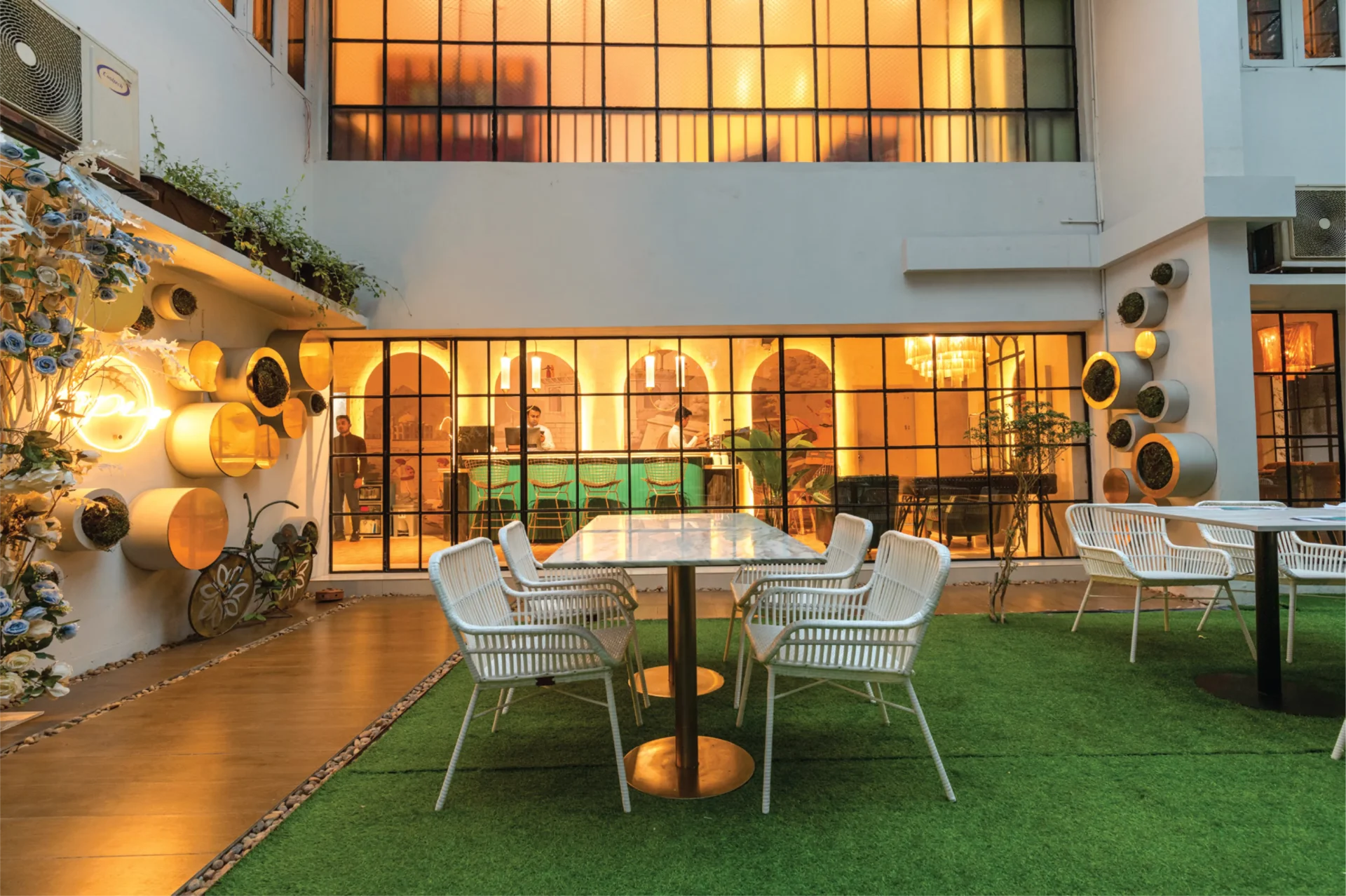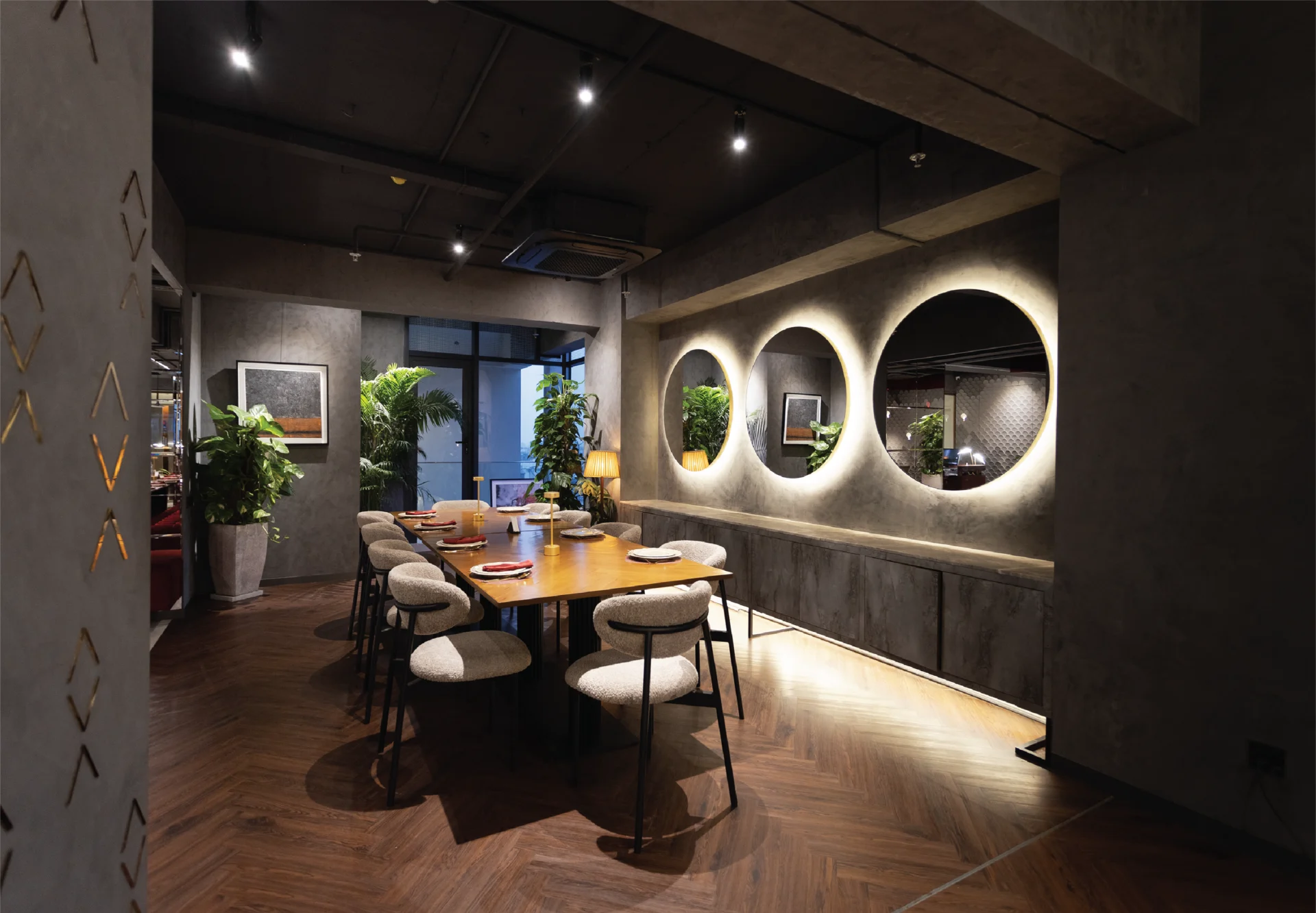
At the heart of any remarkable restaurant lies its design—a subjective blend of form and function. The design itself becomes a storyteller, weaving narratives of contemporary tradition. The walls, the textures, the colours—they all tell a story.

The new branch of Travel East restaurant, located in Dhanmondi and designed by architect Shihab Wares, is inspired by the rich heritage of eastern Asia and infused with contemporary elegance.
The design palette is a canvas of contrasts—silk meets steel, Chinese calligraphy merges artfully with adorned ceramic plates, and centuries-old motifs find new life in sleek lines. The new Travel East restaurant celebrates tradition without being bound by it, with an interior that holds a balance of reverence and reinvention.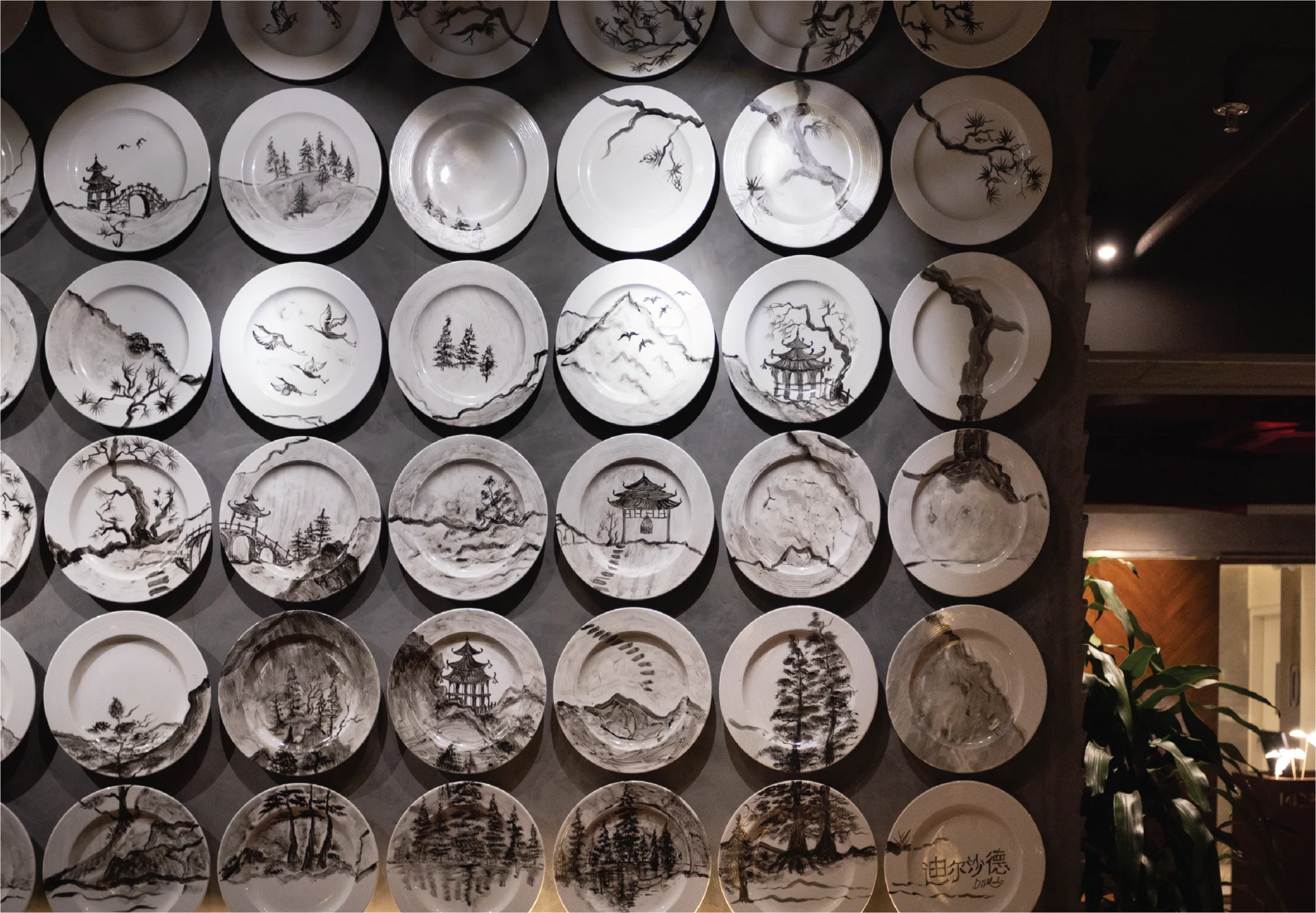
Stepping into the restaurant, the ambiance speaks volumes—an appealing fusion of dark themes with a palette dominated by shades of grey and vibrant accents of red. The interplay of these colours sets the stage for a truly immersive dining experience, creating a sense of warmth and sophistication.
“This time, branding was a top priority for the clients. The interior design was aimed at supporting future branding endeavours, creating a clear and memorable identity,” shares the architect.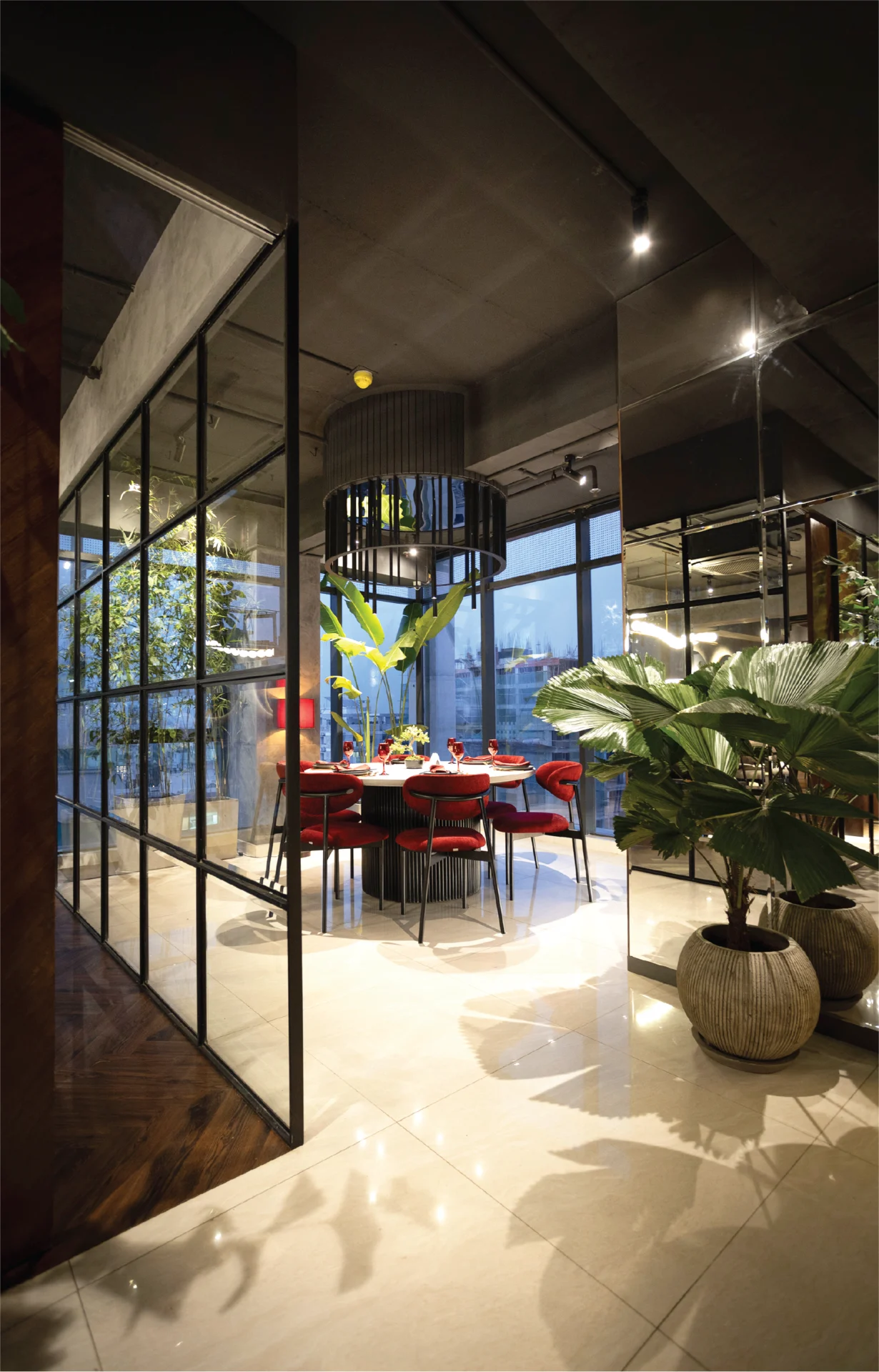
The clients aimed to create a distinct identity for the new branch of Travel East, departing from the colour scheme and patterns of the existing Banani outlet. They sought to break away from the familiar teal hue, opting instead for a new, innovative, and bold colour. With a fusion cuisine blending Thai, Japanese, and other influences, the interior design reflects this wide-ranging assortment. Now, the visual identity of this restaurant stands out with its unique voice.
“They also wanted greenery accommodated. In response to their demand, we’ve incorporated greenery throughout the space,” adds architect Wares. The interplay of green and red creates a vibrant ambiance, enhancing the restaurant’s beauty.
The Travel East Dhanmondi restaurant spans 2160 square feet. The floor plan is quite straightforward, beginning with a lobby entrance adorned with distinctive metal door handles featuring Travel East’s logo, declaring its identity.
Upon entering, the space, at first glance, appears as one large open area. The service area is located on the right side, accessible through two entries. On the left side, the washrooms are separated. There is a space designated as the semi-private zone. To enhance spaciousness, a bi-fold door in the middle can connect to a 10-person conference room, expanding the semi-private area and accommodating up to 25 people.
The remaining zone remains open, with two balcony corners designated as smoking areas—one attached to the semi-private zone and the other in the open space corner. The overall design creates an immersive and inviting atmosphere throughout the space.
What immediately grabs attention here are the stunning feature walls. The restaurant’s design has remarkable walls that bring character and interest to the space. One of the most notable features is the kitchen wall, which displays a fascinating fish scale effect.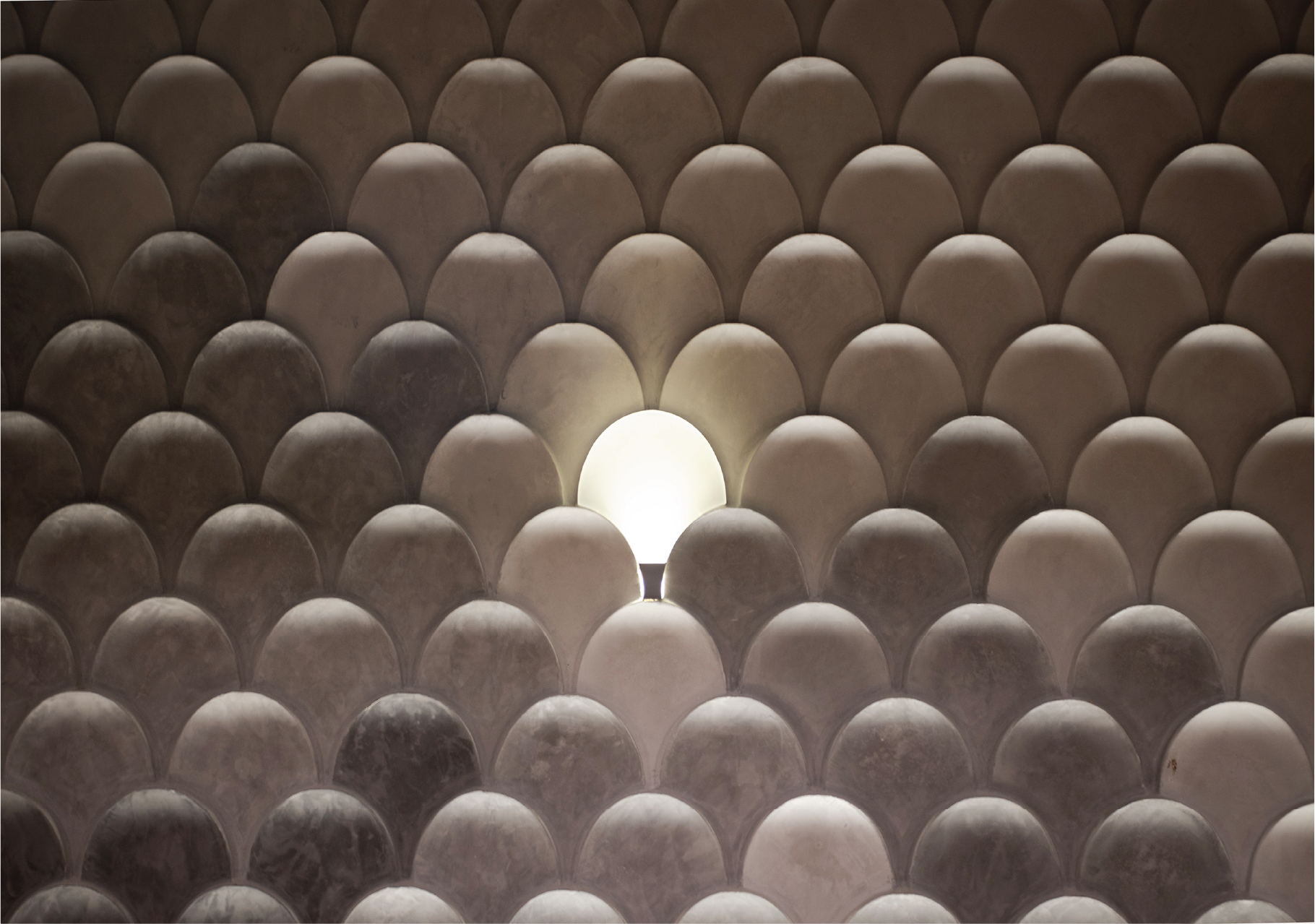
Two of the walls after the entrance also have this unique effect. Moreover, there is a gradual shift in the shades of grey, as each fish scale is distinct. “Achieved through CNC cutting on textured MDF board, the scales resemble the shimmering silvery scales of the Ilish, or Hilsha fish, adding a unique, embossed texture and pattern on the surface of the wall,” shares the architect.
Another striking feature wall is adorned with a collection of plate paintings, creating a visually stunning display. These paintings, handcrafted on Monno Ceramic plates, not only catch the eye but also interact with natural light, enhancing their appearance during the day.
Each plate tells a story through intricate inked art in the style of Chinese literati painting, which is inspired by contemporary Chinese architecture, waterbodies, natural elements, and regional influences. By combining three to four paintings into cohesive art pieces, the wall offers a narrative that reflects the diverse inspirations behind the restaurant’s interior design.
Due to budget constraints, the restaurant opted for locally sourced furniture with a focus on practicality and aesthetics. Imported tables for Banani proved to be high maintenance, prompting the design of metal tables sourced locally. These tables feature curved edges and chamfered corners, lending a sleek appearance, especially to the 2-person tables.
For larger tables, marble was chosen for its low maintenance and cost-effectiveness. Wood was exclusively used for tables in private rooms, maintaining continuity with the previous Travel East branch’s design. The architect shares, “Inspired by the herringbone pattern on the previous branch’s floors, this pattern was replicated on the tables, adding a touch of familiarity and elegance to the dining experience.”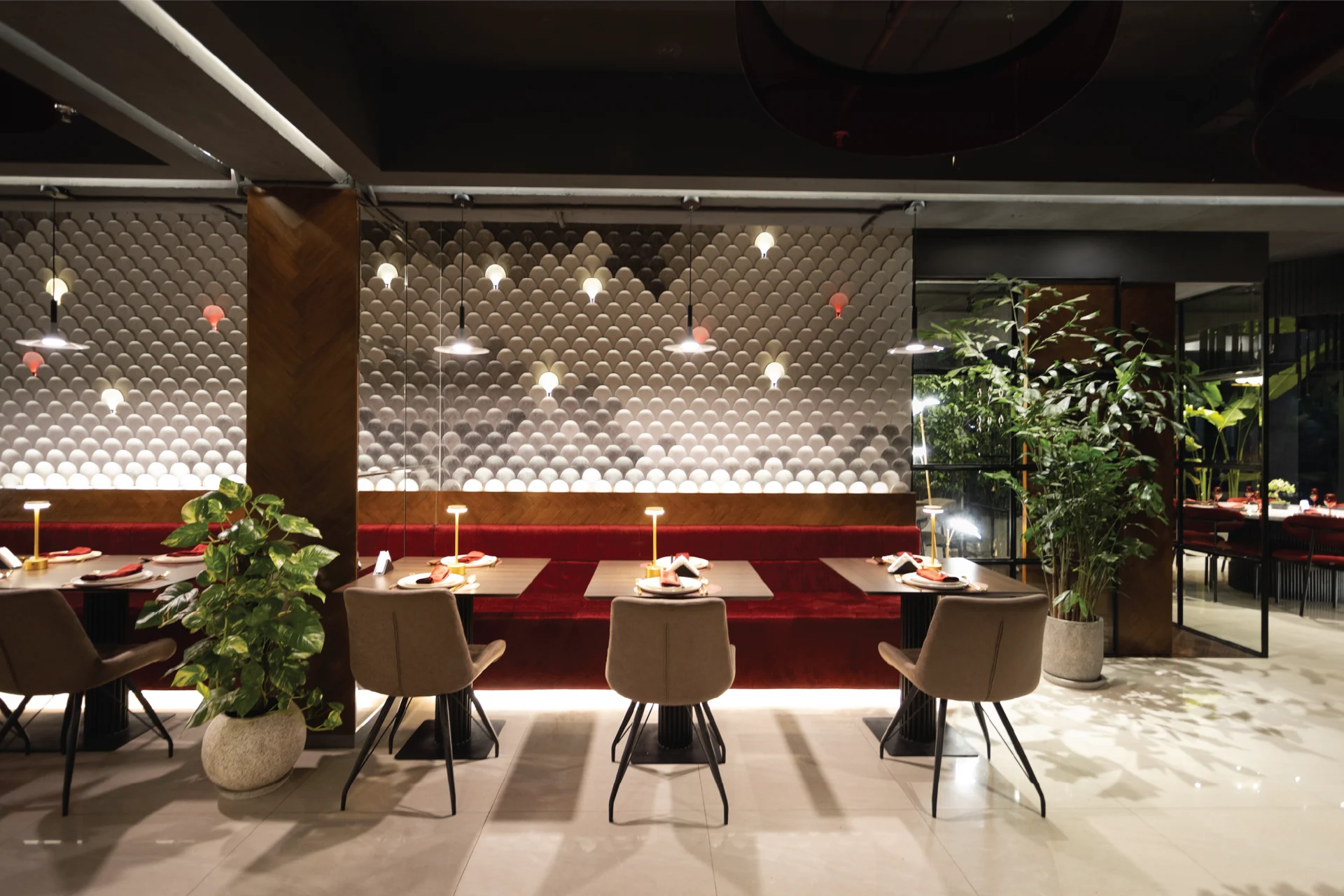
The ceiling has a wave-shaped lighting design and an acrylic ribbon suspended from U-shaped framed MS metal plates. Its s

ubtle glow guides visitors into the experience. If one observes closely, the ceiling ribbon light wave directionally leads them inside the restaurant.
In addition to the ceiling wave, other lighting sources adorn the space. Within the feature walls, there are some lights attached. There are also hanging pendant lights that illuminate selected semi-private corners. Table lamps grace individual tables where mellow lights create an inviting ambiance, perfect for savouring food in the intimate setting of the dark fine dining restaurant. The architect concludes, “It was ensured that the dark ambiance of the fine dining experience doesn’t hinder customers from enjoying their meals, so the lighting was designed and incorporated carefully within the restaurant.”
Creating a dark ambiance while allowing natural light stood as a challenge, but it became an opportunity to embrace the natural transition from day to night as well as enjoy the verdant views of Dhanmondi from the restaurant. As daylight filters into the restaurant, it gradually transforms into an evening delight as the sun sets. The subtle shift in lighting creates a distinct atmosphere, where dusk brings forth a soft glow of warm lights. This gentle luminance enhances the allure of the surroundings, casting each corner in a tranquil aura and inviting guests to unwind and indulge in culinary delights amidst an atmosphere of refined charm.






